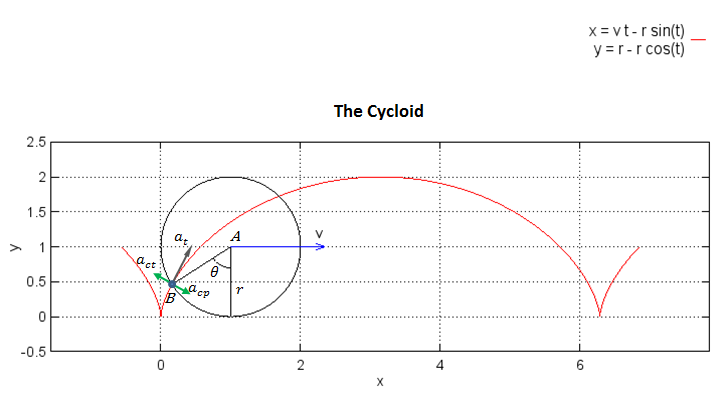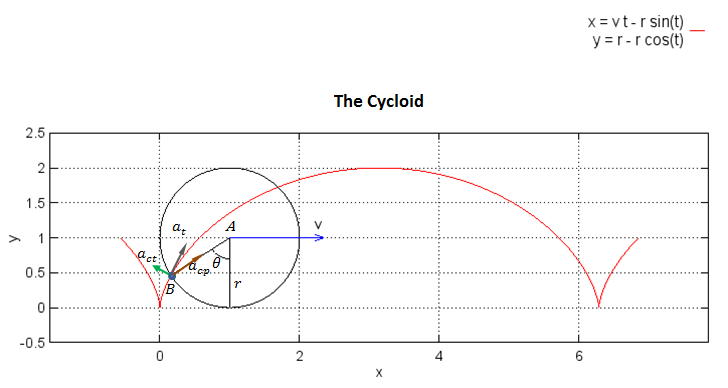Consider a disk of radius with a vertical axis mounted on a cart. When viewed from above, a point on the disk describes a cycloid when the disk’s constant angular speed matches the cart’s constant velocity where is constant angular velocity. This is depicted in the diagram below:

The standard textbook equations for describing the trajectory of the point are given above the figure. The point feels a centrifugal acceleration due to inertia acting in the direction normal to the cycloid trajectory at that point. It also feels an acceleration in the tangential direction due to the forced spinning of the disk and the axis translation. Since the disk does not fly apart, there must be an additional centripetal force in the direction opposite to due to inter-molecular electrostatic forces of attraction in the disk. The vector sum of and gives an acceleration pointing to the center of the disk.
Now suppose we replace the disk by a steel ball at on a string of length .

The ball is brought up to constant angular velocity by some convenient means, for example the ball would be physically attached to the disk and it would be detached from the disk once we reach ideal cycloid trajectory. Assuming a frictionless situation, the steel ball will remain in orbit forever, as a moon in orbit around a planet. In this situation, the ball still feels centrifugal acceleration due to its inertia. There is a tension force on the string always in the radial direction to the axis , otherwise the ball would fly off.
But what about the third acceleration, ? How large is it compared to the disk case and in what direction?

The end result effect of the will be the steel ball acceleration.
The steel ball will speed up and the cycloid will become more prolate.
